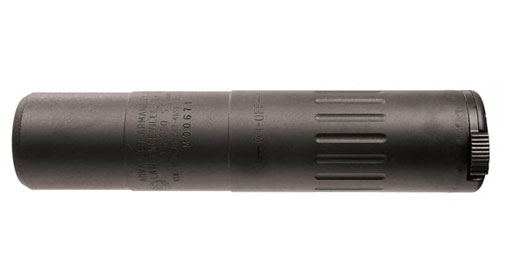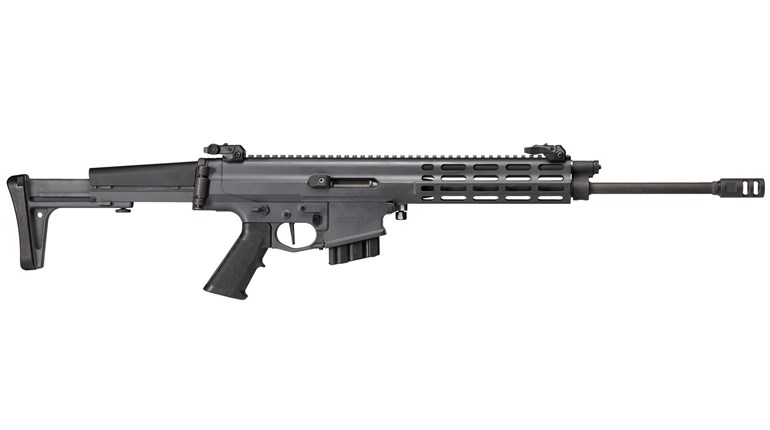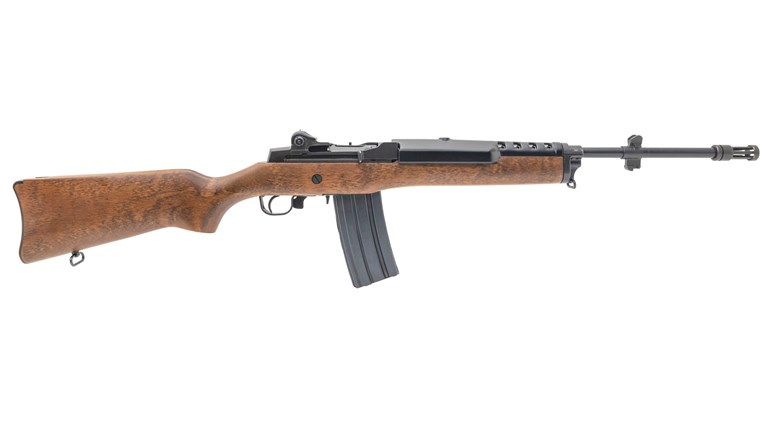
Each suppressor uses a 51-tooth, ratchet-mount adapter in the form of a flash hider, muzzle brake or combination Brakeout 51T compensator. I selected the Blackout Muzzle Brake for the M4-2000 and the Blackout Flash Hider for the M4-Mini. AAC flash hiders are not designed to be timed, so shimming is not required. The brakes come with a shim kit and are intended to be aligned so the ports are positioned at three, nine and 12 o'clock.
Thread-locking compound and good instructions are provided with all AAC mounts. The muzzle brake was very effective at reducing felt recoil when fired without the suppressor attached.AAC cans are very easy to install and lock up securely. Simply screw the coarsely threaded suppressor onto the adapter and as it moves rearward, a spring-loaded ratchet in the suppressor body engages the large teeth on the mount, clicking in place until tight. The release button (used for removing the can) on each test suppressor popped up without any problem in between the teeth, so I was confident of lockup each time. It is a very simple system that works.
Functionally, the M4-2000 had a very distinct recoil impulse different from any other suppressor I have used. Regardless of my shooting position or ammunition choice, the M4-2000 pulled the rifle away from my shoulder while pushing the muzzle sharply up. The effect was pronounced and was at least partially responsible for the slight reduction in accuracy I saw with the M4-2000. Velocity changes were negligible, but this suppressor showed greater vertical shift than the SureFire or Gemtech models. The Mini-4 had no such recoil impulse and showed a slight accuracy increase with one load, while remaining unchanged with the other. Of all models tested, the Mini-4 had the greatest vertical shift distance and lost the most velocity when switching from unsuppressed to suppressed modes. The good news is both the M4-2000 and the Mini-4 produced no measureable horizontal shift, which is a big plus in my book.
Reliability was vastly different between the two AAC models. The M4-2000 did not get along with my AR's direct-gas-impingement system. Bolt-carrier movement became very sluggish after only 20 rounds. Fouling was heavy and the rifle failed to fully chamber a round four times in 150 rounds. We lefties are used to getting crud in our faces from semi-automatic ejection ports, but the M4-2000 nearly choked me out with the gas after only a few rounds and my face was peppered with powder, oil and gun funk after just 10 rounds.
Conversely, the Mini-4 had no functional problems in 150 rounds and shot much cleaner. I wondered if the difference was caused by the M4-2000 being used on a muzzle brake while the Mini-4 was tested with a flash hider. I decided to try the Mini-4 on the muzzle brake mount and still had no trouble with it. Bottom line: the M4-2000 was finicky on my rifle.
AAC M4-2000 Specifications
Weight: 17.1 ounces
Length: 6.6 inches
Diameter: 1.5 inches
MSRP: $1,050 (suppressor only)
AAC Mini-4 Specifications
Weight: 13.5 ounces
Length: 5.25 inches
Diameter: 1.5 inches
MSRP: $895 (suppressor only





































